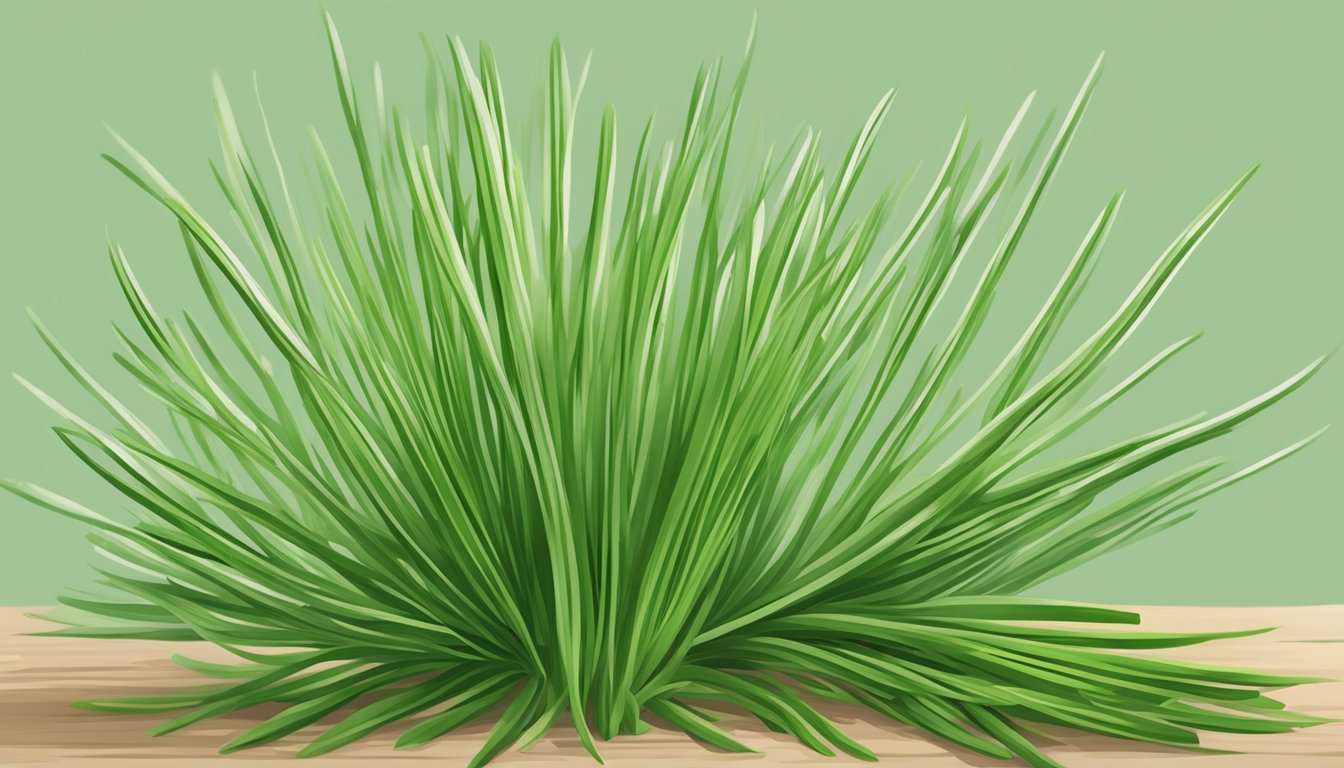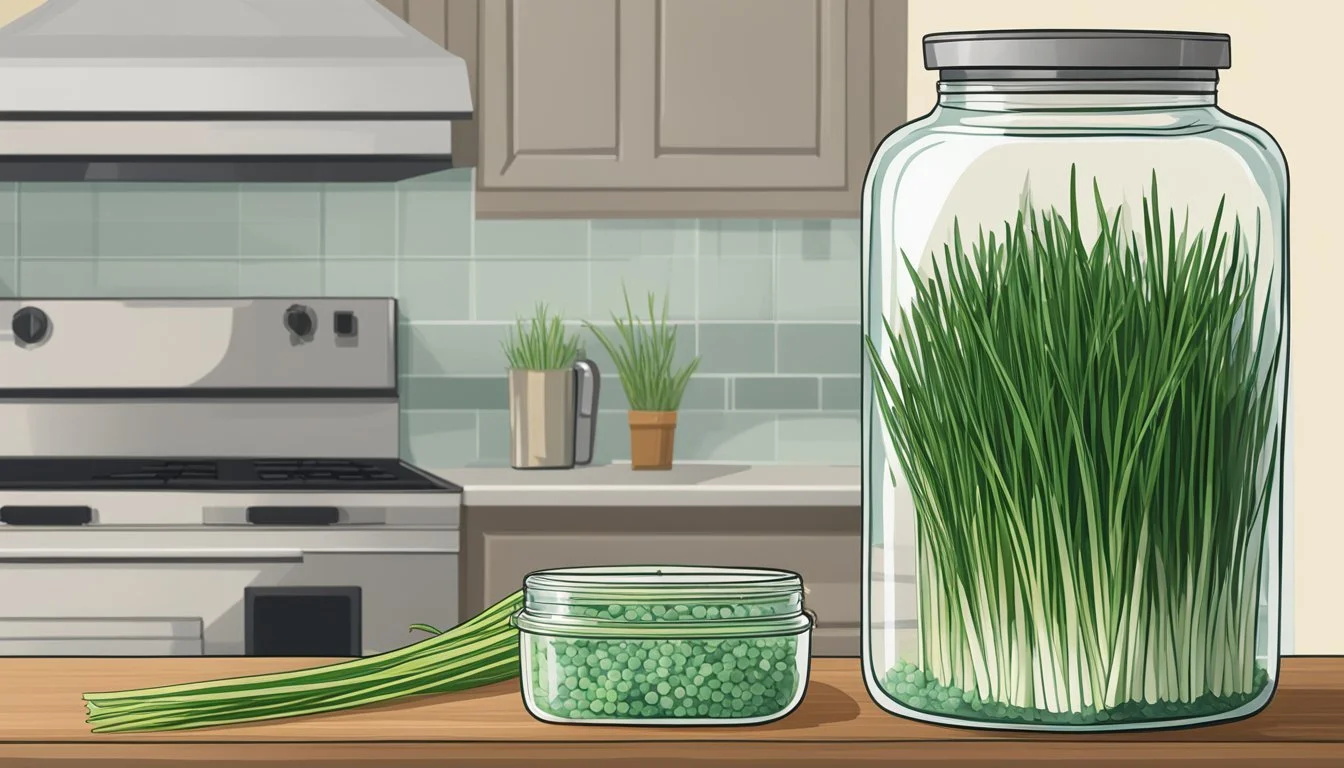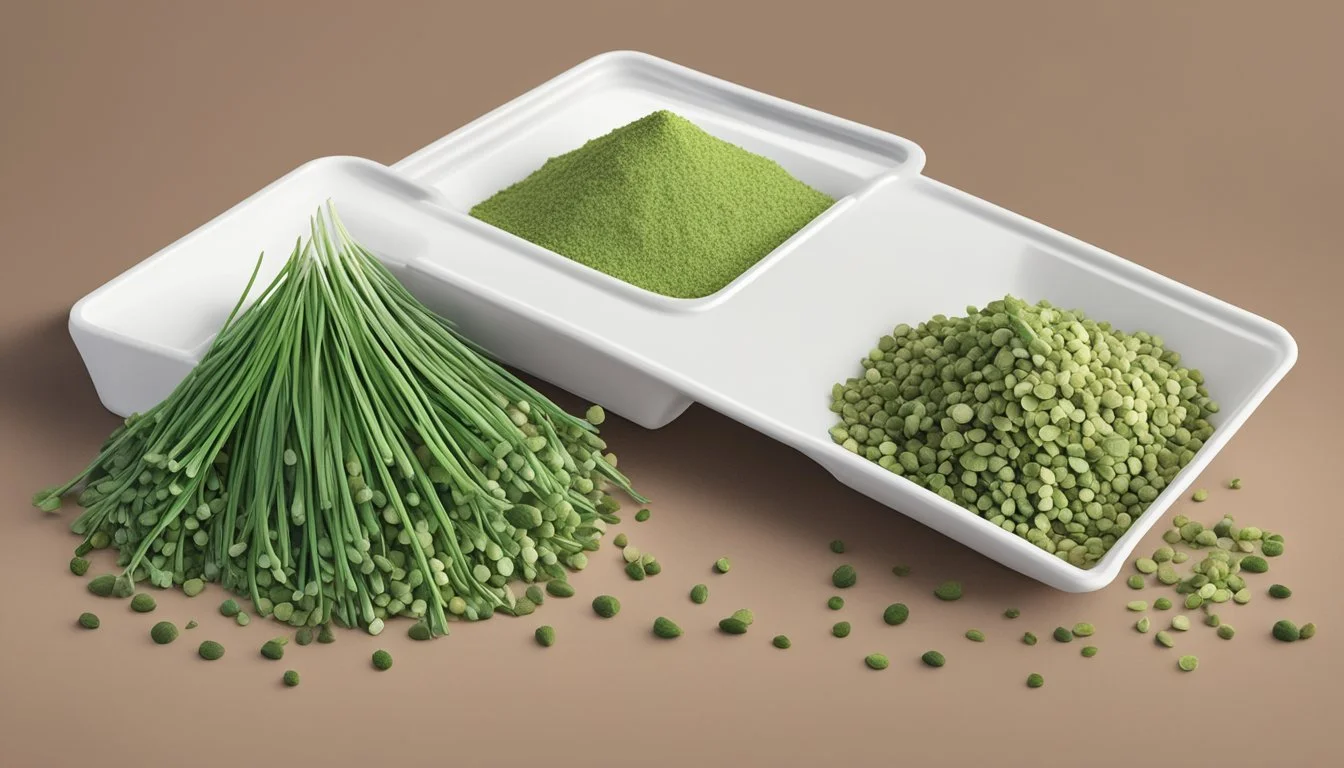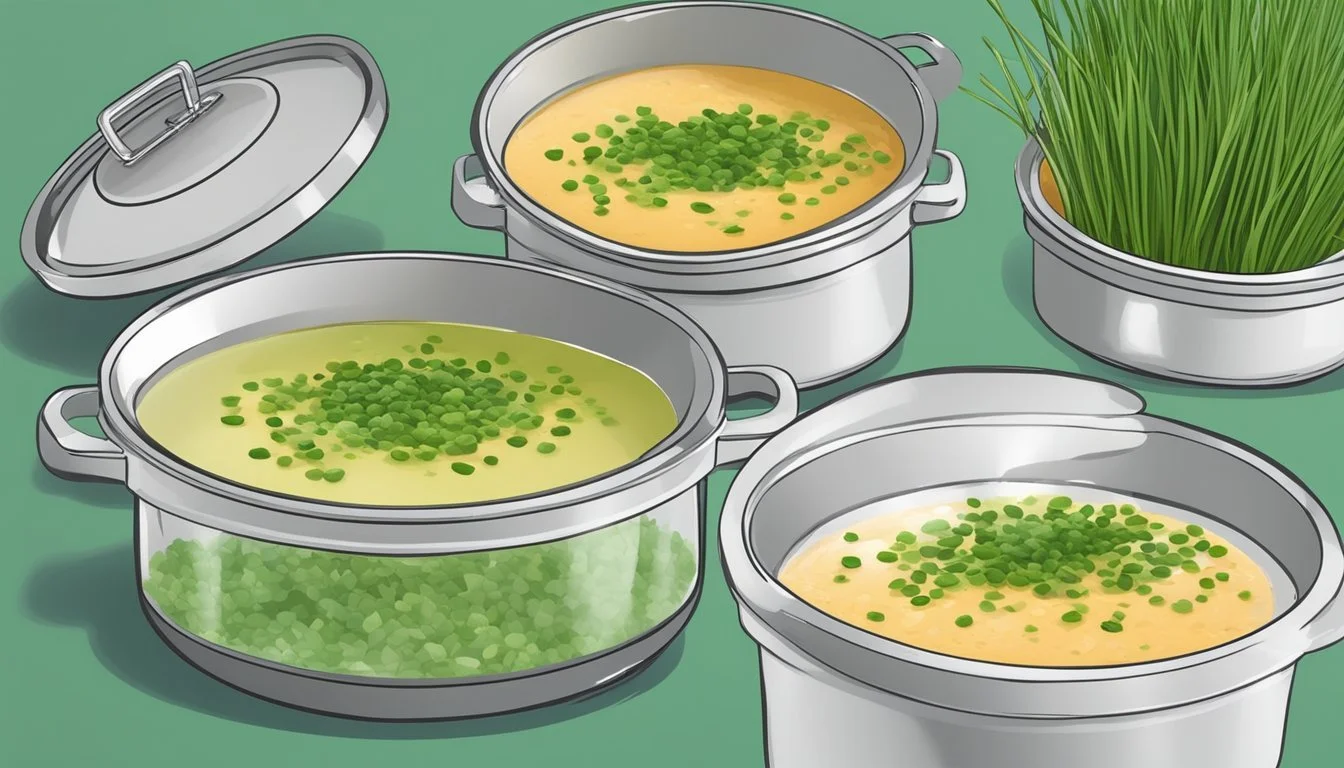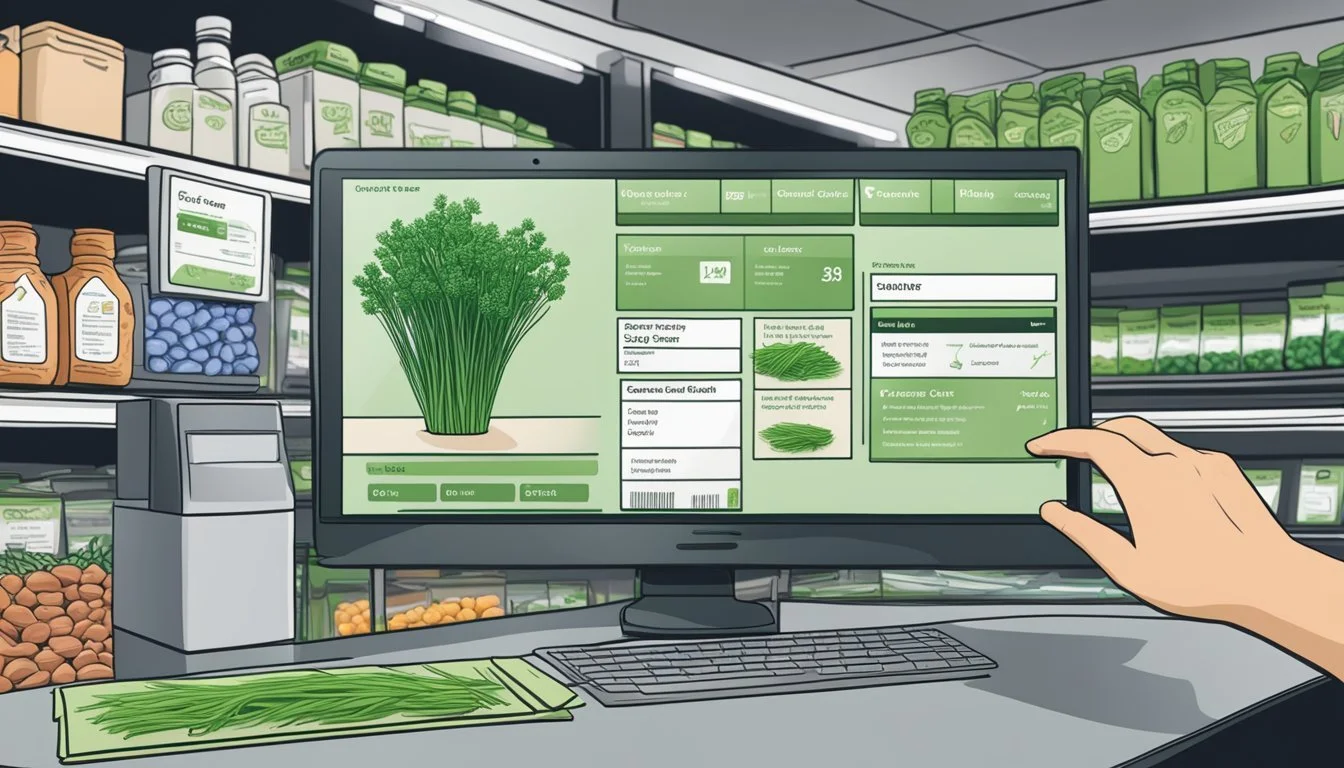Fresh vs. Freeze-Dried Chives: Flavor, Nutrition, and Culinary Uses Compared
Chives are a versatile herb that can elevate the flavor of many dishes. While fresh chives are widely used, freeze-dried chives offer a convenient alternative. Fresh chives provide a subtle, delicate onion flavor, while freeze-dried chives offer a more concentrated taste that can be easily stored for longer periods.
The choice between fresh and freeze-dried chives often depends on the specific recipe and personal preference. Fresh chives are ideal for garnishing dishes, adding a pop of color and mild flavor to salads, soups, and potato dishes. Freeze-dried chives, on the other hand, work well in cooked dishes, dips, and sauces where a more intense onion flavor is desired.
When substituting freeze-dried chives for fresh ones, it's important to adjust the quantity. Generally, one tablespoon of fresh chives equals about one teaspoon of freeze-dried chives. This conversion ensures that the flavor remains balanced in the final dish. Both forms of chives can be valuable additions to a home cook's herb collection, offering flexibility and flavor to a wide range of culinary creations.
Understanding Chives and Their Variants
Chives are versatile herbs that add a mild onion flavor to dishes. They come in different forms and varieties, each with unique characteristics and culinary uses.
Types of Chives
Common chives and garlic chives are the two main types. Common chives have thin, hollow stems with a mild onion taste. They're often used as a garnish or in salads.
Garlic chives have flat leaves and a subtle garlic flavor. These are popular in Asian cuisine for stir-fries and dumplings.
Both types can be found fresh or dried. Fresh chives provide a brighter flavor and vibrant color. Dried chives offer convenience and a longer shelf life.
Fresh Chives vs Dried Chives
Fresh chives have a delicate, subtle flavor and crisp texture. They're best used raw or added at the end of cooking to preserve their taste and appearance.
Dried chives have a more concentrated flavor. The drying process intensifies their onion-like taste. They work well in cooked dishes, sauces, and dips.
Freeze-dried chives offer a middle ground. They retain more of the fresh flavor than air-dried varieties. They rehydrate quickly and can be used similarly to fresh chives.
Common Chives and Garlic Chives
Common chives (Allium schoenoprasum) have a mild onion flavor. They're often used in French cuisine and pair well with potatoes, eggs, and cream-based dishes.
Garlic chives (Allium tuberosum) have a stronger, garlicky taste. They're a staple in Chinese and Korean cooking. Their flat leaves are tougher than common chives.
Both varieties can be grown easily in gardens or pots. They're perennial plants that come back year after year. Chives are also rich in vitamins A and C, making them a nutritious addition to meals.
Nutritional Value and Health Benefits
Chives offer an array of vitamins, minerals, and beneficial compounds in both fresh and freeze-dried forms. Their nutritional profile makes them a valuable addition to a healthy diet, with applications in both culinary and medicinal contexts.
Vitamins and Minerals Content
Fresh chives are rich in vitamin C, providing a significant portion of the daily recommended intake. They also contain vitamin A, which supports eye health and immune function. Freeze-dried chives have an even higher concentration of these vitamins, with vitamin C levels up to 669% higher than fresh chives.
Chives are a good source of essential minerals. They contain iron, which is crucial for oxygen transport in the blood. Magnesium, important for muscle and nerve function, is also present in chives.
Potassium, vital for heart health and blood pressure regulation, can be found in both fresh and freeze-dried chives. Calcium, necessary for strong bones and teeth, is another mineral present in chives.
Culinary and Medicinal Uses
Chives add a mild onion flavor to dishes without overpowering other ingredients. They are commonly used as a garnish for soups, salads, and baked potatoes. Chives can be added to omelets, dips, and sauces for a fresh, savory taste.
The allicin compound in chives has antimicrobial properties. This may help fight certain bacteria and fungi. Chives also contain quercetin, an antioxidant with potential anti-inflammatory effects.
Chives have been used in traditional medicine to aid digestion and boost the immune system. Some studies suggest that compounds in chives may have anticancer properties, though more research is needed to confirm these effects.
Culinary Applications
Chives offer versatile culinary uses, enhancing both flavor and visual appeal in a wide range of dishes. Their mild onion taste and vibrant green color make them a popular choice for various cooking applications.
Incorporating Chives into Dishes
Fresh and freeze-dried chives can be easily incorporated into many recipes. Add them to soups, stews, and sauces for a subtle onion flavor. Chives pair well with eggs, making them perfect for omelets and scrambled eggs. Mix chopped chives into mashed potatoes, cream cheese, or butter for a flavorful spread. In salads, chives provide a mild bite and visual interest. For baked dishes, sprinkle chives over casseroles or mix them into bread dough before baking.
Freeze-dried chives can be rehydrated before use or added directly to dishes. Their concentrated flavor means a little goes a long way in recipes.
Using Chives as Garnish
Chives excel as a garnish, adding a pop of color and fresh flavor to finished dishes. Sprinkle finely chopped fresh chives over soups, baked potatoes, or grilled meats just before serving. Use whole chive stalks to create an elegant presentation for appetizers or canapés. Garnish creamy dips, sour cream, or yogurt-based sauces with a sprinkle of chives for visual appeal and taste enhancement.
Freeze-dried chives can also be used as a garnish, offering a crunchy texture and intense flavor. They work particularly well on dishes where moisture might wilt fresh chives.
Flavor Enhancements with Chives
Chives add a mild onion flavor without overpowering other ingredients. Use them to enhance the taste of dressings, marinades, and spice mixtures. Add chives to compound butters for a flavorful spread on bread or melted over steaks. In egg dishes, chives provide a subtle depth of flavor that complements the richness of the eggs.
Mix chives into cream cheese or sour cream-based dips for a fresh, oniony kick. They pair well with other herbs like parsley, dill, and tarragon in herb blends. Use chives to brighten the flavor of potato salads, pasta dishes, or rice pilafs.
Chives in Cooked and Uncooked Recipes
Fresh chives are best added at the end of cooking or used raw to preserve their delicate flavor and bright green color. Stir them into hot soups or sauces just before serving. For cold dishes like potato salad or coleslaw, mix in chopped chives just before serving to maintain their crispness.
Freeze-dried chives can withstand longer cooking times, making them suitable for dishes that require extended heat exposure. Add them to slow-cooked stews, casseroles, or baked goods. In uncooked recipes, freeze-dried chives can be sprinkled directly onto salads or mixed into cold dips and dressings.
Comparison of Flavor Profiles
Fresh chives and their dried or freeze-dried counterparts offer distinct flavor profiles and textures. These differences impact their culinary uses and overall taste experience.
Fresh Chives Flavor Profile
Fresh chives provide a mild, delicate onion flavor with subtle hints of garlic. Their taste is crisp and clean, adding a bright, fresh note to dishes. The flavor is most pronounced when chives are used raw or added at the end of cooking.
Fresh chives have a tender, slightly crunchy texture. This characteristic makes them ideal for garnishing soups, salads, and baked potatoes. Their vibrant green color also enhances the visual appeal of many dishes.
Dried and Freeze-Dried Chives Flavor
Dried and freeze-dried chives possess a more concentrated oniony flavor compared to their fresh counterparts. The drying process intensifies their taste, resulting in a stronger, more pungent profile.
Freeze-dried chives retain more of the original flavor than air-dried varieties. They offer a robust onion taste that can stand up to longer cooking times. This makes them suitable for use in soups, stews, and baked goods.
The texture of dried chives is notably different from fresh. They become brittle and lose their crunchiness. Rehydration can partially restore their texture, but they won't match the crisp bite of fresh chives.
Flavor Intensity and Texture Differences
Fresh chives deliver a milder taste compared to their dried versions. Dried chives have a more potent flavor, requiring smaller quantities in recipes. This intensity allows them to maintain their presence in dishes with strong flavors.
Texture-wise, fresh chives provide a pleasant crunch and tender mouthfeel. Dried chives lack this textural element but can be incorporated more easily into dry mixes and rubs.
The choice between fresh and dried chives often depends on the specific dish and desired outcome. Fresh chives excel in cold preparations and as finishing herbs. Dried chives shine in cooked dishes where a concentrated onion flavor is desired.
Storage and Shelf Life
Proper storage techniques and understanding shelf life are crucial for maintaining the quality of both fresh and freeze-dried chives. Recognizing signs of spoilage ensures you always use chives at their best.
Proper Storage Techniques
Fresh chives require refrigeration to maintain their delicate flavor and texture. Wrap them loosely in a slightly damp paper towel and place them in a plastic bag in the crisper drawer. This method helps retain moisture while allowing air circulation.
Freeze-dried chives need a cool, dry environment. Store them in an airtight container away from direct sunlight and heat sources. A pantry or cupboard works well for this purpose.
For long-term storage, freezing fresh chives is an option. Chop them finely, spread on a baking sheet, and freeze. Once frozen, transfer to a freezer-safe container or bag.
Extending Shelf Life
Fresh chives typically last 1-2 weeks when properly stored in the refrigerator. To extend their life, trim the ends and place them in a glass of water, covering the tops with a plastic bag. Change the water every few days.
Freeze-dried chives have a significantly longer shelf life. Unopened containers can last up to 3 years when stored in a cool, dry place. Once opened, use within 6 months for best quality.
Frozen fresh chives can maintain good quality for up to 6 months. Ensure they're stored in an airtight container to prevent freezer burn.
Signs of Spoilage
Fresh chives show clear signs when they're past their prime. Look for:
Wilting or limpness
Yellowing or browning of leaves
Slimy texture
Off odors
Discard fresh chives if any of these signs appear.
Freeze-dried chives have fewer visible signs of spoilage. Check for:
Clumping or moisture in the container
Changes in color or texture
Unusual odors
If freeze-dried chives develop any of these characteristics, it's best to replace them.
Substitutes and Conversion Ratios
Chives add a mild onion flavor to dishes, but substitutes and proper conversion ratios are essential when fresh chives aren't available. Knowing how to replace fresh chives with dried alternatives ensures the right flavor balance in recipes.
Finding Substitutes for Chives
When fresh chives are unavailable, several options can provide similar flavors. Dried chives are the closest substitute, offering a concentrated onion taste. Green onions (scallions) make an excellent fresh alternative, though their flavor is slightly stronger.
Leeks, shallots, or the green parts of spring onions can also work in a pinch. For those seeking a different herb altogether, parsley or dill can add a fresh, green element to dishes, though their flavors differ from chives.
In some cases, a small amount of onion powder might suffice, especially in cooked dishes where the visual appeal of green specks isn't crucial.
Conversion Ratio When Replacing Fresh with Dried
Converting fresh chives to dried requires adjusting quantities to maintain the right flavor intensity. The general rule of thumb is:
1 tablespoon fresh chives = 1 teaspoon dried chives
This 3:1 ratio accounts for the concentration of flavor in dried herbs. For recipes specifying chive blades:
10 fresh chive blades ≈ 1 teaspoon dried chives
It's important to note that these ratios are guidelines. Factors like the potency of the dried chives and personal taste preferences may necessitate adjustments.
When using dried chives, add them earlier in the cooking process to allow time for rehydration and flavor infusion. Fresh chives, conversely, are best added near the end of cooking or as a garnish to preserve their delicate flavor and texture.
Preparing and Using Chives
Chives are a versatile herb that can enhance many dishes. Proper preparation and usage techniques ensure you get the most flavor and visual appeal from both fresh and dried varieties.
Rehydrating Dried Chives
Dried chives can be rehydrated to restore their texture and flavor. Place them in a small bowl and cover with warm water. Let them soak for 5-10 minutes until they become pliable. Drain and gently pat dry with a paper towel before use.
For freeze-dried chives, rehydration is optional. Many prefer to use them as-is for a crunchy texture. If desired, sprinkle them with a small amount of water or add them directly to moist dishes.
Chopping Techniques for Fresh Chives
Fresh chives require minimal preparation. Rinse the chive blades under cool water and pat dry. Use a sharp knife to cut them into small pieces, about 1/4 inch long.
For a neat appearance, gather the chives in a bundle and snip with kitchen scissors. This method works well for garnishing. Alternatively, roll the chives into a tight bundle and slice thinly for delicate rings.
Avoid chopping chives too far in advance, as they can lose flavor and wilt quickly.
Adjusting Recipes for Different Chive Forms
When substituting dried chives for fresh, use a 1:3 ratio. One tablespoon of fresh chives equals one teaspoon of dried. Adjust this ratio based on personal taste preferences.
Freeze-dried chives are more potent than air-dried varieties. Start with half the amount called for in recipes using regular dried chives, then adjust to taste.
For cooked dishes, add dried chives early in the cooking process to allow them to rehydrate and release their flavor. Fresh chives are best added at the end of cooking or as a garnish to preserve their delicate taste and bright green color.
The Role of Chives in Winter Cooking
Chives provide a burst of fresh flavor to winter dishes when other herbs are scarce. They offer versatility and nutritional benefits that make them valuable for cold-weather cooking.
Benefits of Dried Chives During Cold Months
Freeze-dried chives are an excellent alternative to fresh chives in winter. They retain much of their flavor and nutritional value, making them ideal when fresh produce is limited. These dried herbs have a long shelf life, allowing cooks to keep them on hand for months.
Freeze-dried chives are easy to store and use. They can be sprinkled directly onto soups, stews, and casseroles, adding a mild onion flavor without the need for chopping. This convenience is particularly appreciated during busy holiday seasons.
The intense flavor of dried chives means a little goes a long way. They work well in hearty winter dishes like potato soup, roasted vegetables, and warm dips. Dried chives also pair nicely with creamy sauces and cheese-based recipes, common in cold-weather comfort foods.
For those who enjoy baking, dried chives can be incorporated into savory breads and biscuits. They add a subtle flavor and visual appeal to winter baked goods. Rehydrating freeze-dried chives is simple, making them versatile for various cooking methods.
Purchasing and Online Availability
Fresh and dried chives are widely available through various retail channels. Both local stores and online platforms offer options for purchasing these versatile herbs.
Buying Fresh and Dried Chives Locally
Fresh chives can be found in the produce section of most grocery stores. They're often sold in small bunches or plastic containers. Many supermarkets also stock potted chive plants for home growing.
Dried chives are typically located in the spice aisle. They come in small jars or plastic containers. Some specialty food stores may offer larger bulk quantities of dried chives.
Farmers' markets are an excellent source for fresh, locally grown chives during the growing season. These markets often provide higher quality and fresher herbs compared to supermarkets.
Availability on Online Platforms like Amazon
Amazon offers a wide selection of dried chives from various brands. Options include conventional and organic varieties in different package sizes.
Fresh chives are more challenging to purchase online due to their perishable nature. Some specialty produce sites do offer overnight shipping for fresh herbs, including chives.
Many online retailers sell chive seeds and plants for home gardeners. These can be a cost-effective way to have a continuous supply of fresh chives.
Freeze-dried chives are also available through online platforms. These products offer a longer shelf life while maintaining a flavor closer to fresh chives than traditional dried options.


